Osprey Transporter Panel Loader Review
We dig how comfy the Osprey Transporter Panel Loader is, though much of its organization is focused in the main compartment, hampering gear access.
Our Verdict
Save time. Get access to brief summaries of our reviews so you can browse and make decisions more efficiently.
Pros
- Bottle pocket secure but easy to access
- Back panel and harness system keep bag close to you for a good fit
- Stretchy mesh pockets’ material feels notably robust
Cons
- Most pockets are in the main compartment
- Lots of straps, but no strap keepers
- Gets scratched relatively easily
Technical Details
-
Capacity
20l
-
Weight (lb)
1.788 lb (0.8 kg)
-
Denier
450D
-
Dimensions
18.5 in x 13.19 in x 9.06 in (47 x 33.5 x 23 cm)
-
Notable Materials
Recycled Polyester, DWR Coating, Thermoplastic Polyurethane (TPU), YKK Zippers
-
Manufacturing Country
Vietnam
-
Laptop Compartment Size
16"
-
Warranty Information
Buying Options


Full Review
Good build quality is a solid foundation for any backpack, and the Osprey Transporter Panel Loader is an excellent example. Nearly all, like 99%, of this backpack feels robust and high quality, from the recycled polyester TPU-coated fabric to the chunky YKK zippers. That remaining 1%? It’s the plasticky clip of the key leash in the main compartment. For the most part, it’s a dependable daypack that’s also exceptionally comfortable to carry. However, it does have a downside.
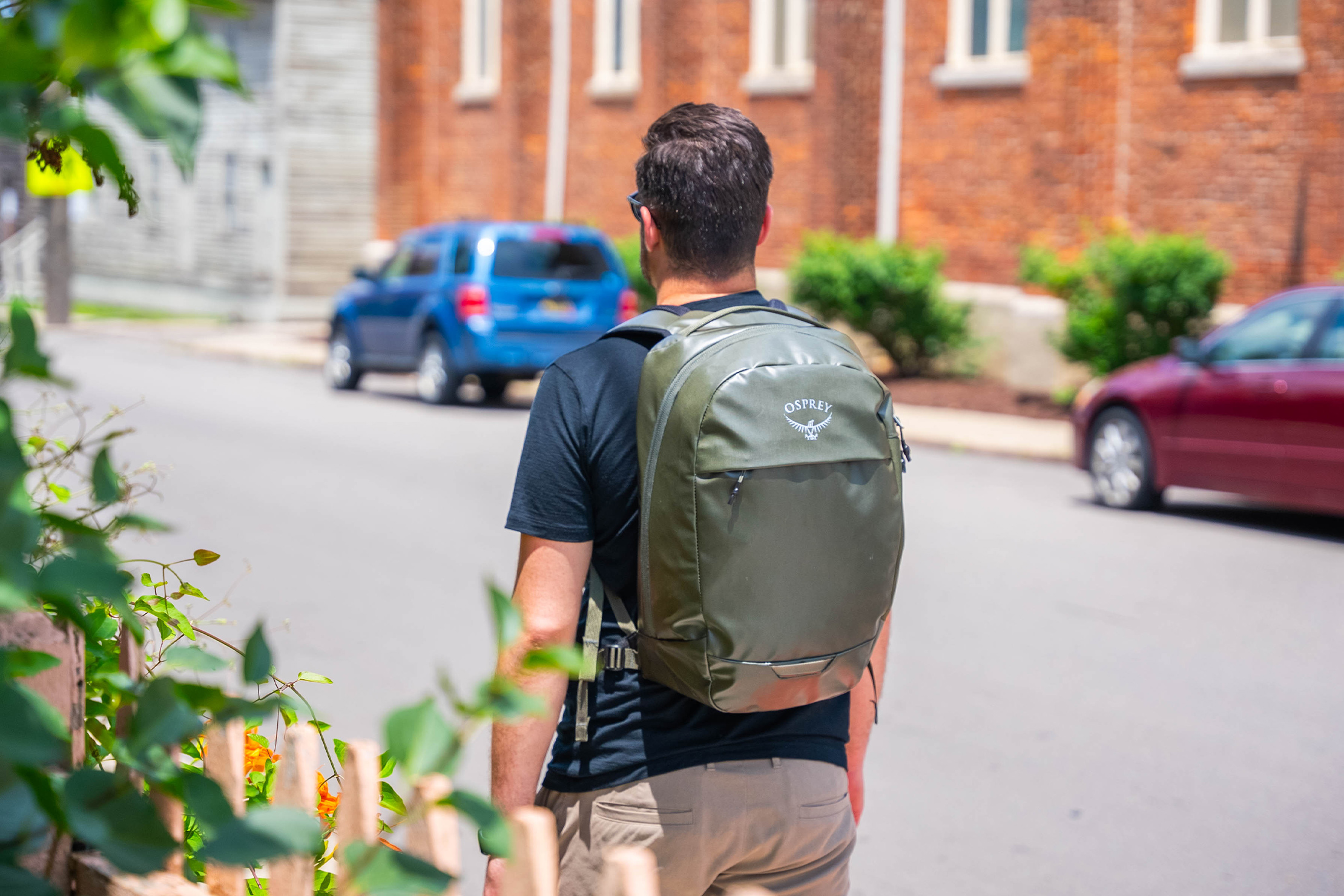
The main weakness here is its layout. Most of its small pockets are inside the main compartment, obscured by large gear or obscuring items beneath them. Meanwhile, the lone front pocket is one large empty space, so everyday carry items get mixed easily. It’s a very nuanced issue, so let’s get into the review and dive into the details.
External Components
The outside of the Transporter Panel Loader looks very practical and utilitarian, especially in this Haybale Green colorway. It just shouts, “Go out on an adventure!” whenever we see it, and not in a forced and tacky way. A big factor in achieving that look is the recycled 450-denier recycled polyester fabric. It’s not the toughest fabric by density alone, but it feels very robust in the hand. You may notice that it has a very noticeable sheen, courtesy of its PFC-free DWR TPU coating. If those acronyms look alien to you, don’t worry, we’ve got you covered.
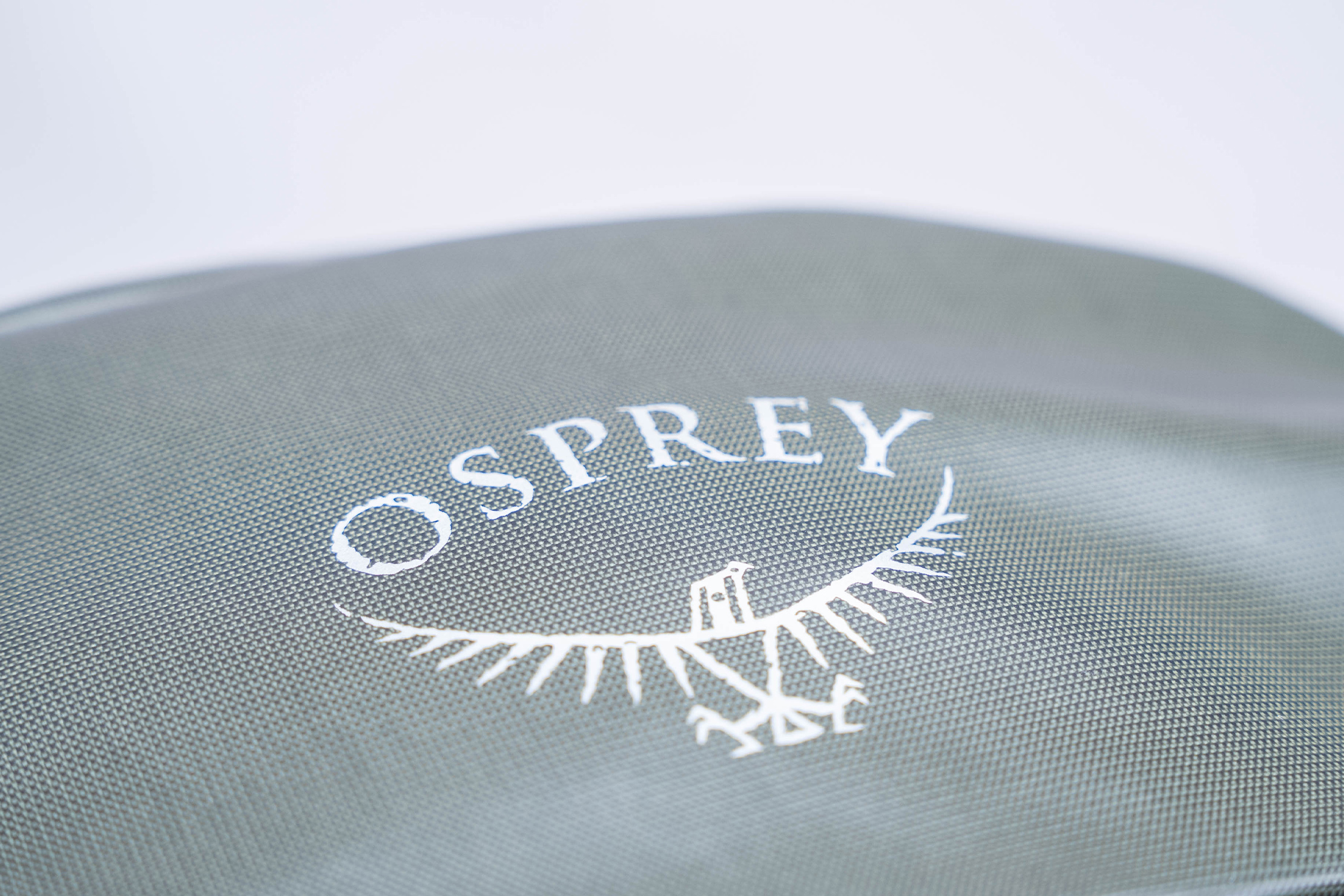
PFC stands for perfluorochemicals (chemicals that are bad for the environment), DWR means “durable water repellent,” while TPU stands for thermoplastic polyurethane. So in the context of the Transporter Panel Loader, its fabric has a water-repellent coating that doesn’t have PFC. All of that said, while the fabric’s tarpaulin-like slickness means most splashes bead off harmlessly, it’s also relatively easy to scratch. At the time of writing, this sample has gathered a few blemishes at its base, where it makes a lot of ground contact. Fortunately, it’s not as bad as what we’ve seen with the Transporter 40. If anything, it’s mainly the coating that is getting scratched up on our sample; the fabric itself is holding up just fine.
The zippers are from YKK, and they’ve performed reliably throughout testing as expected. Trust us; a zipper is the last thing you’d want to break on a backpack. It’s a security risk and inconvenient, so having ones from a well-regarded brand is reassuring. Osprey’s choice of heat-shrunk material for the tips of the paracord zipper pulls feels conversely conservative. On the other hand, it’s simple and DIY-replaceable in case it breaks.
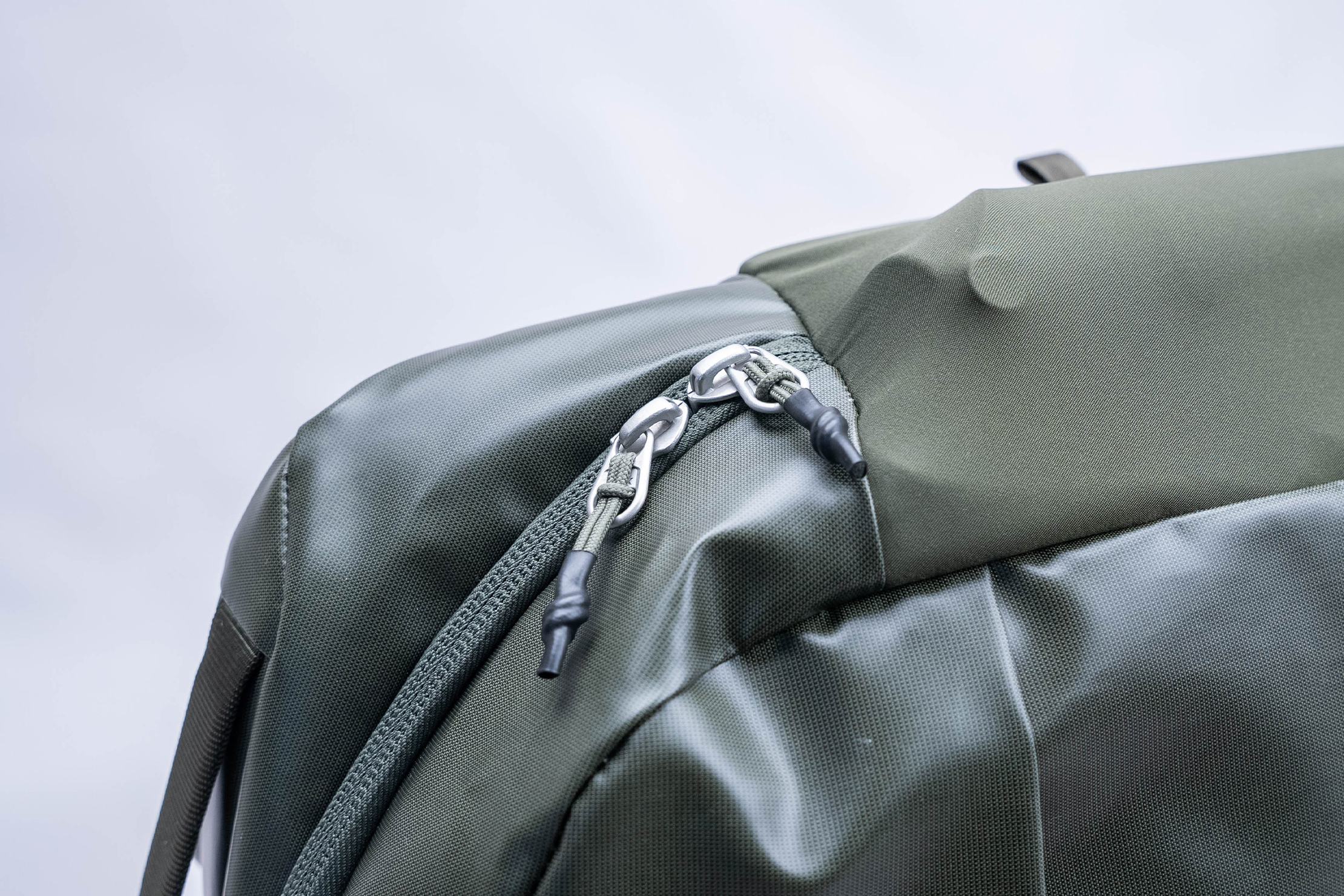
As to features, the Transporter Panel Loader is simple and uncomplicated. There’s a lone loop at the front near the bottom where you can hang a bike light. You can find this on a lot of Osprey bags, and it’s particularly handy for those who like to carry bags on bike rides from time to time. There’s also a top handle that’s thick and padded for comfort. We typically see thick handles like these on larger travel backpacks, so it’s refreshing to see them on smaller daypacks, as well. This handle is also far back enough that it doubles as a luggage pass-through (we suggest using the waist strap to anchor the bottom if you plan to utilize this feature).
The Pack Hacker crew is a bit divided on the Transporter Panel Loader’s water bottle pocket. It’s a slip pocket on the right side (left if you’re looking at it from the back panel), with its opening pointing towards the rear. This makes it easy to reach for your bottle even while you’re wearing the bag on a bike, and that’s a huge plus for some of us. Meanwhile, those of us who don’t ride a bike to work think it’s either just okay or slightly less convenient than more typical bottle pocket designs, like the kind you’d find on the Centauri, since it’s more embedded and closed.
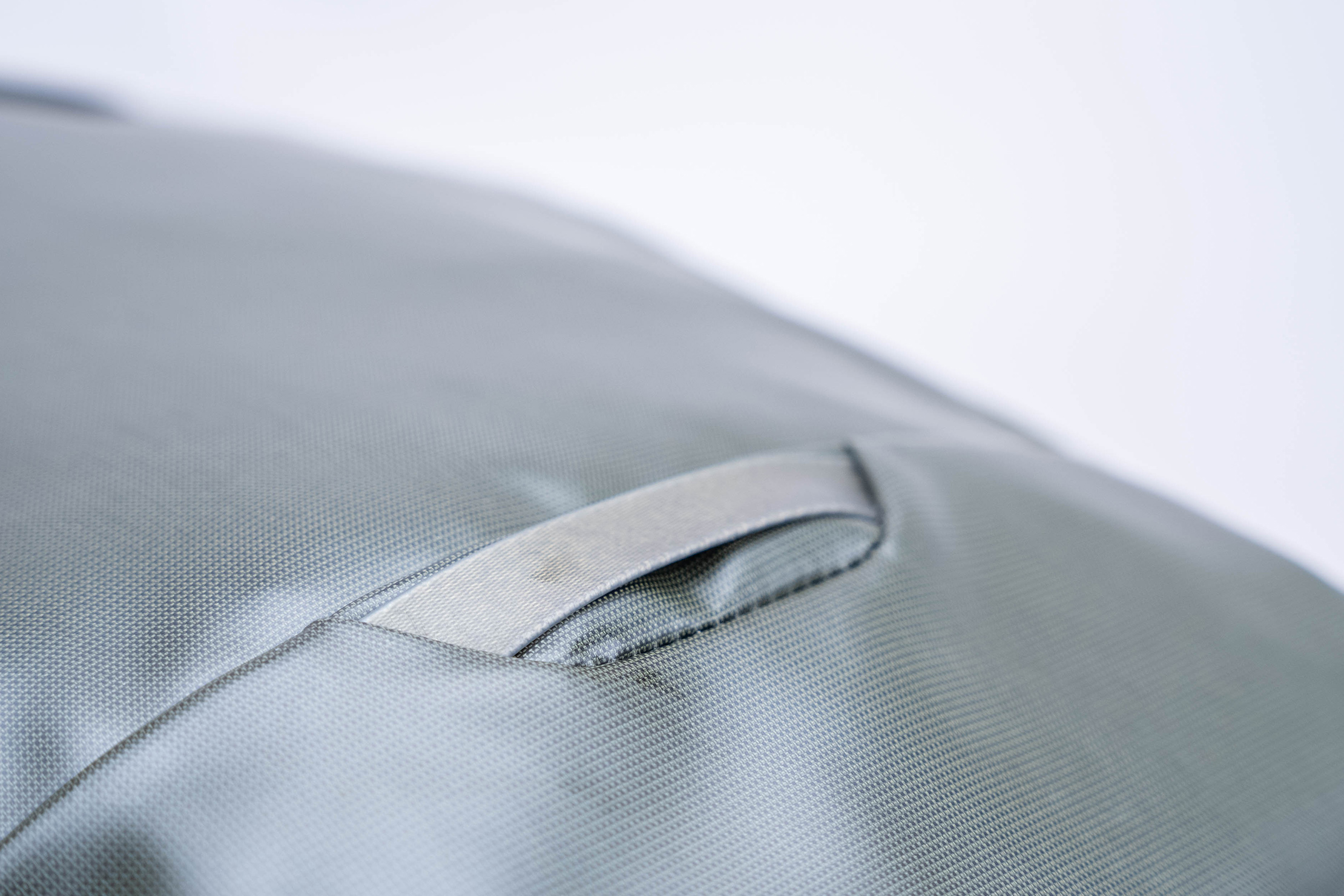
In terms of space, we can fit a 21-ounce Hydro Flask insulated bottle inside. We’d say this is the ideal bottle size, and anything bigger will likely struggle to fit. As always, your mileage may vary. It’s also worth noting that since this bottle pocket doesn’t jut out as typical bottle pockets do, it takes up space from the internal volume of the bag.
Despite the Transporter Panel Loader’s modest 20-liter size, its harness system is well-appointed. The shoulder straps are well-padded, and their undersides are covered in mesh that lets air escape more easily. We were initially apprehensive about the way the straps connect at the top. A collared design like this can feel tight around the neck, but that’s fortunately not the case, as we’ll explain in the next section.
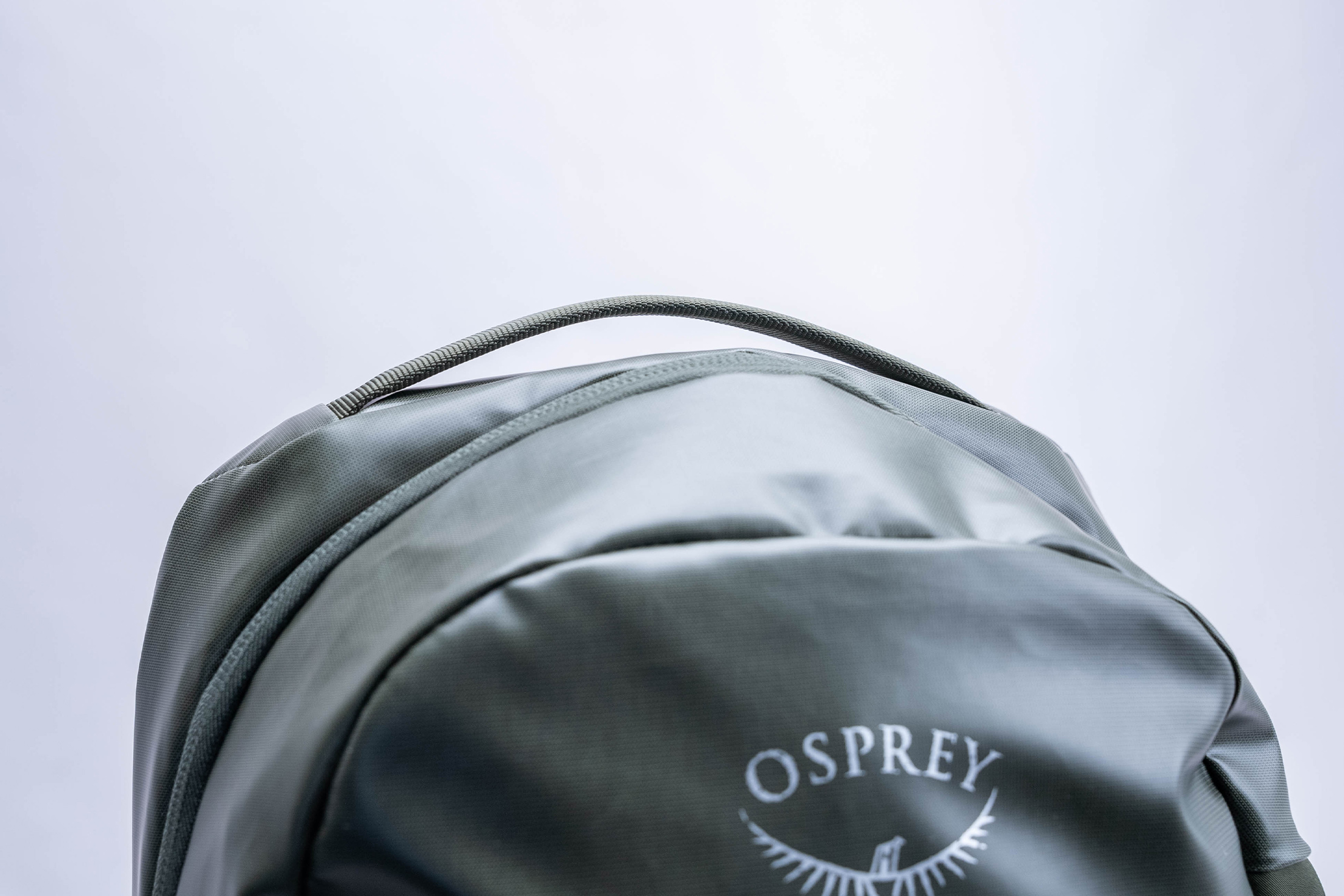
The sternum strap is mounted on rails that let it slide, making it super easy to adjust and allowing you to be very picky with the adjustment. As opposed to those on fixed loops, you can slide this strap however much you want, even if it’s a millimeter higher or lower. The buckle also has a built-in whistle that you can use to call someone’s attention during emergencies—another nice touch we usually see on Osprey bags.
Down at the bottom, there’s also a waist strap. This isn’t the super-thickly-padded kind you’d find on travel backpacks. Instead, it’s a simple nylon strap with a buckle in the middle. Since it lacks any structure, don’t expect it to redirect load away from the shoulder straps; it’s more for keeping the bag close during vigorous movement. You can also remove it completely to lessen the number of straps dangling around.
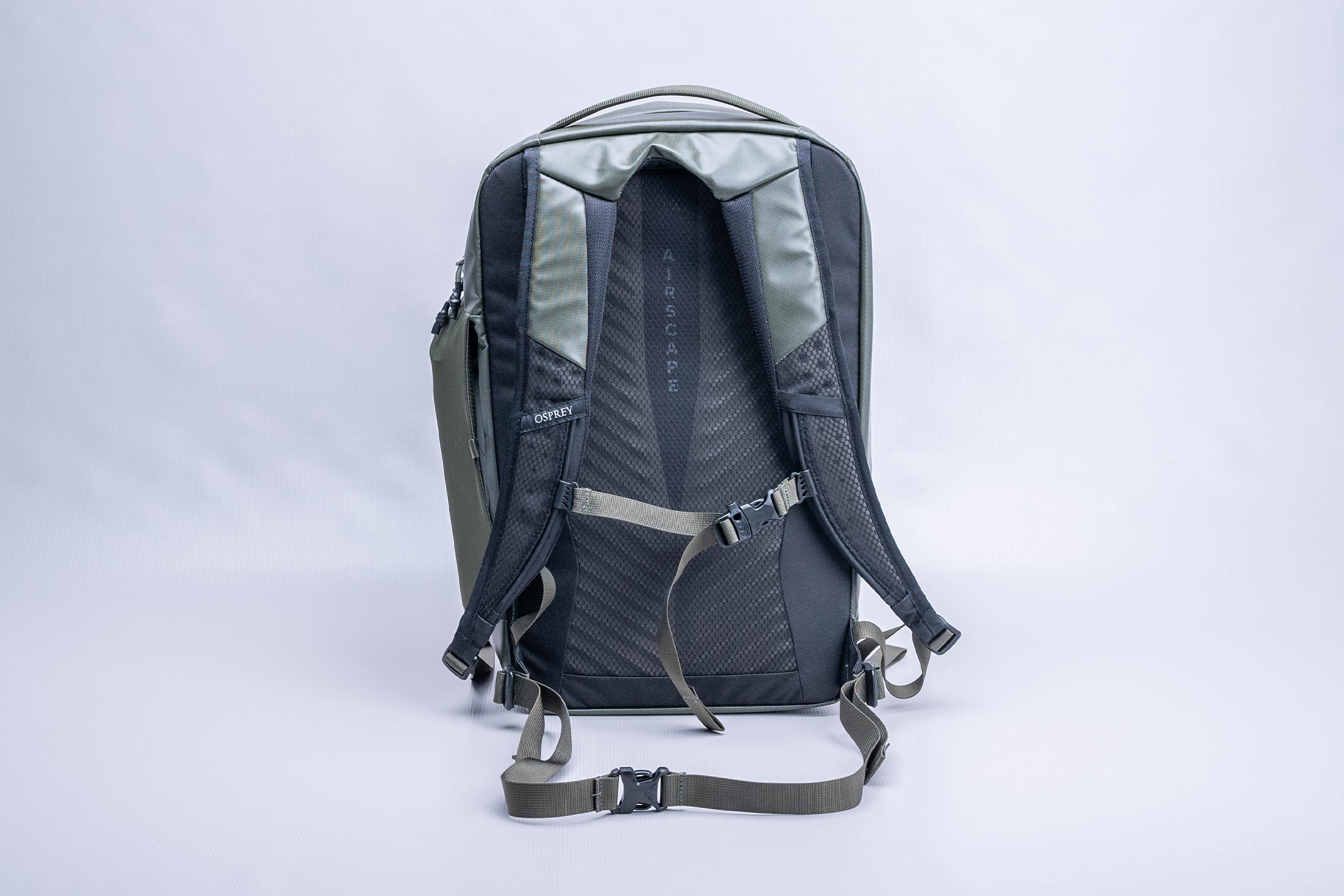
Last but not least is the AirScape back panel. What’s AirScape? It’s Osprey’s back panel design that uses foam ridges and mesh. Put the two together, and you have a back panel that sits both comfortably and close to the body while permitting easy airflow. The question is, does it work?
Fit Notes
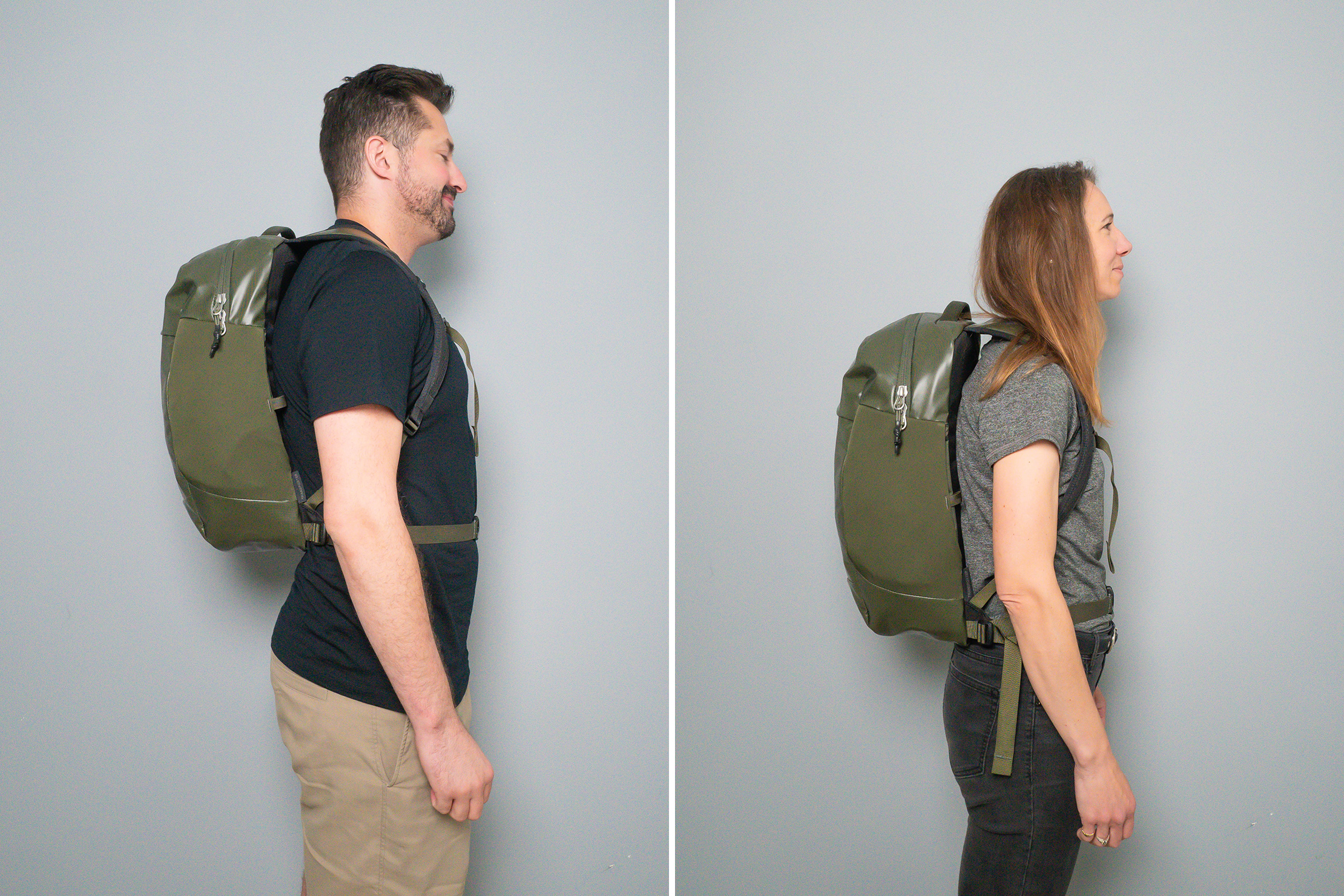
In short, yes. The back panel contours really well to match the back’s curvature. It may sound trivial, but it makes a ton of difference in day-to-day carrying. We like to double down and use both the sternum strap and waist strap to lock the bag down and ensure a near-perfect fit. With all of the straps locked in, we’re also happy to report that the collared design doesn’t feel too closed and claustrophobic. Nitpicks? Well, there are a lot of straps, but no strap keepers to tame them.
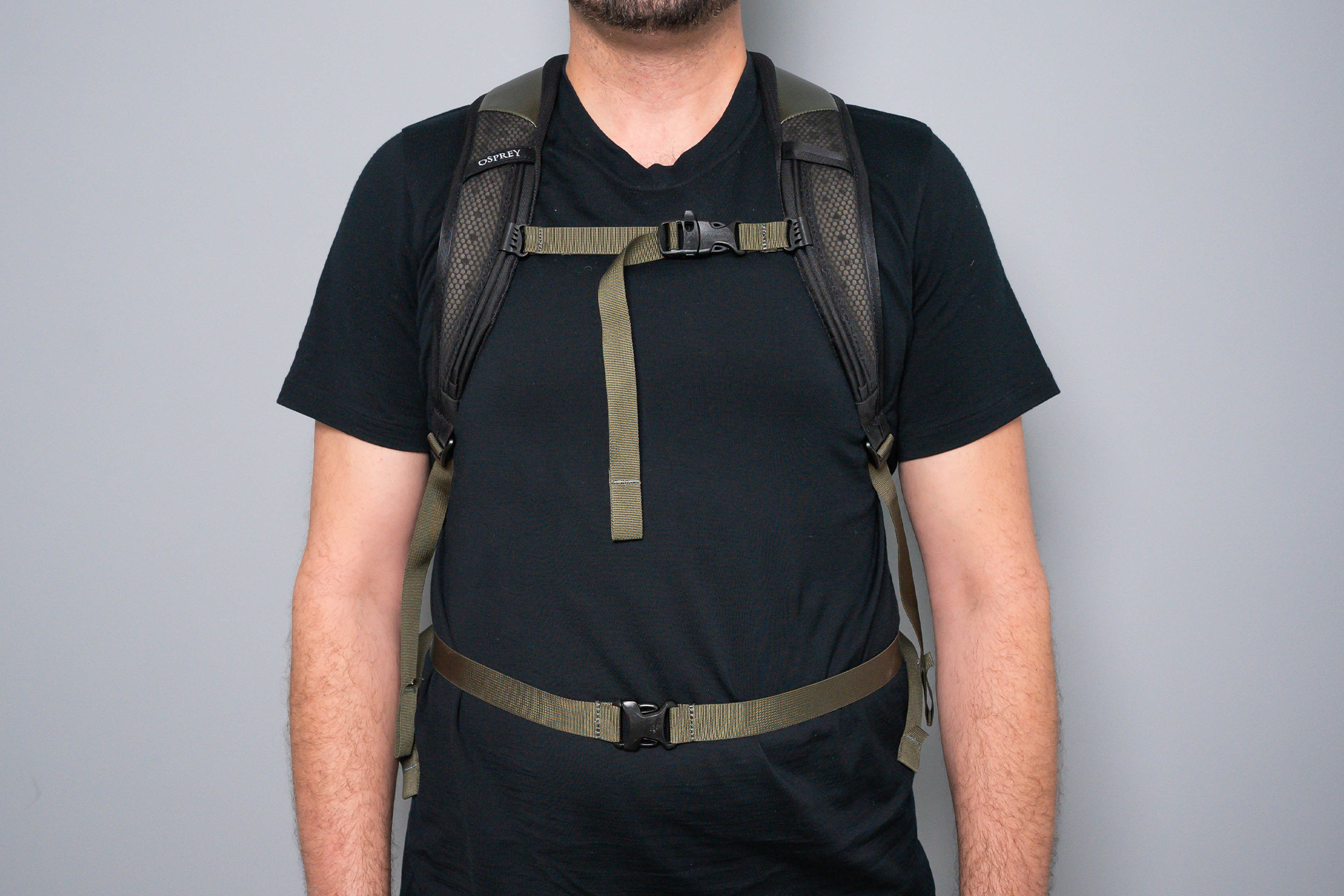
That’s right, like most Osprey bags, the Transporter Panel Loader also lacks strap keepers. Luckily, this isn’t a deal breaker whether you want them for a cleaner look or are afraid that the straps might snag on expensive furniture. For the latter, we suggest fashioning some DIY strap keepers or buying third-party ones. Strap keepers are fairly easy to add yourself, though we still wish they were present out of the box.
Inside The Backpack
There’s only one secondary compartment on the Transporter Panel Loader: the front pocket, hidden by a fabric welt just below the large Osprey logo. Inside, it’s a simple dump pocket with a lightly-colored liner but no additional pockets or dividers. It’s very roomy inside, letting you stash a packable jacket without much fuss.
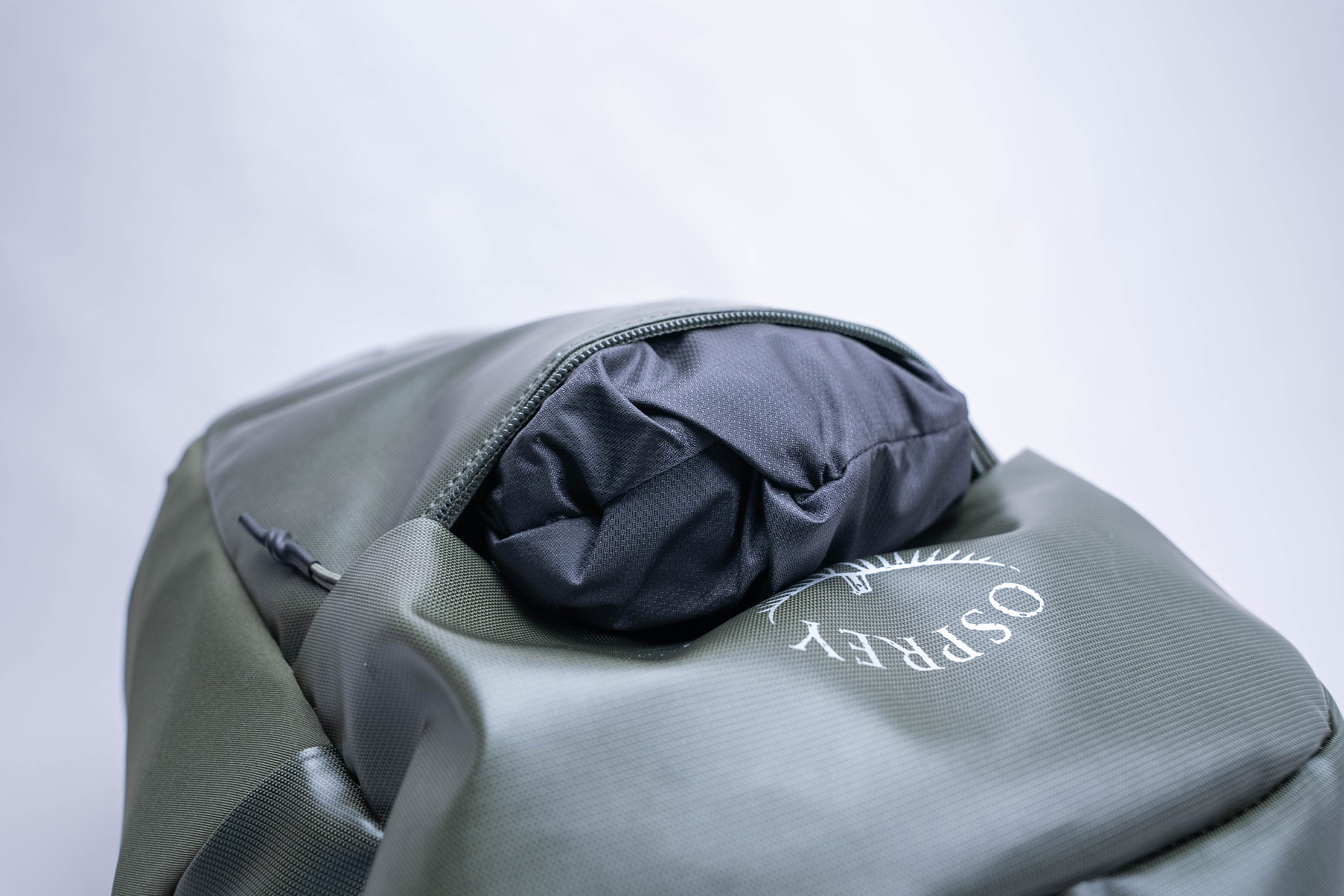
On the other hand, we would’ve liked to see some organization here. Spoiler alert: most of this bag’s pockets are inside the main compartment. That’s not very convenient if you carry around a lot of everyday-carry items like keys, dongles, earphones, lip balm, wet wipes, and gum. They’ll all have to mix into this single pocket, which can get confusing when you just need to reach for that one item you really need at the moment.
The main compartment’s opening zips from the edge of the water bottle pocket. This is particularly high since the water pocket’s coverage is quite tall. The zipper runs all the way down the other side of the bag to compensate. Don’t worry; a fabric gusset at the very end stops the front from fully flopping open.
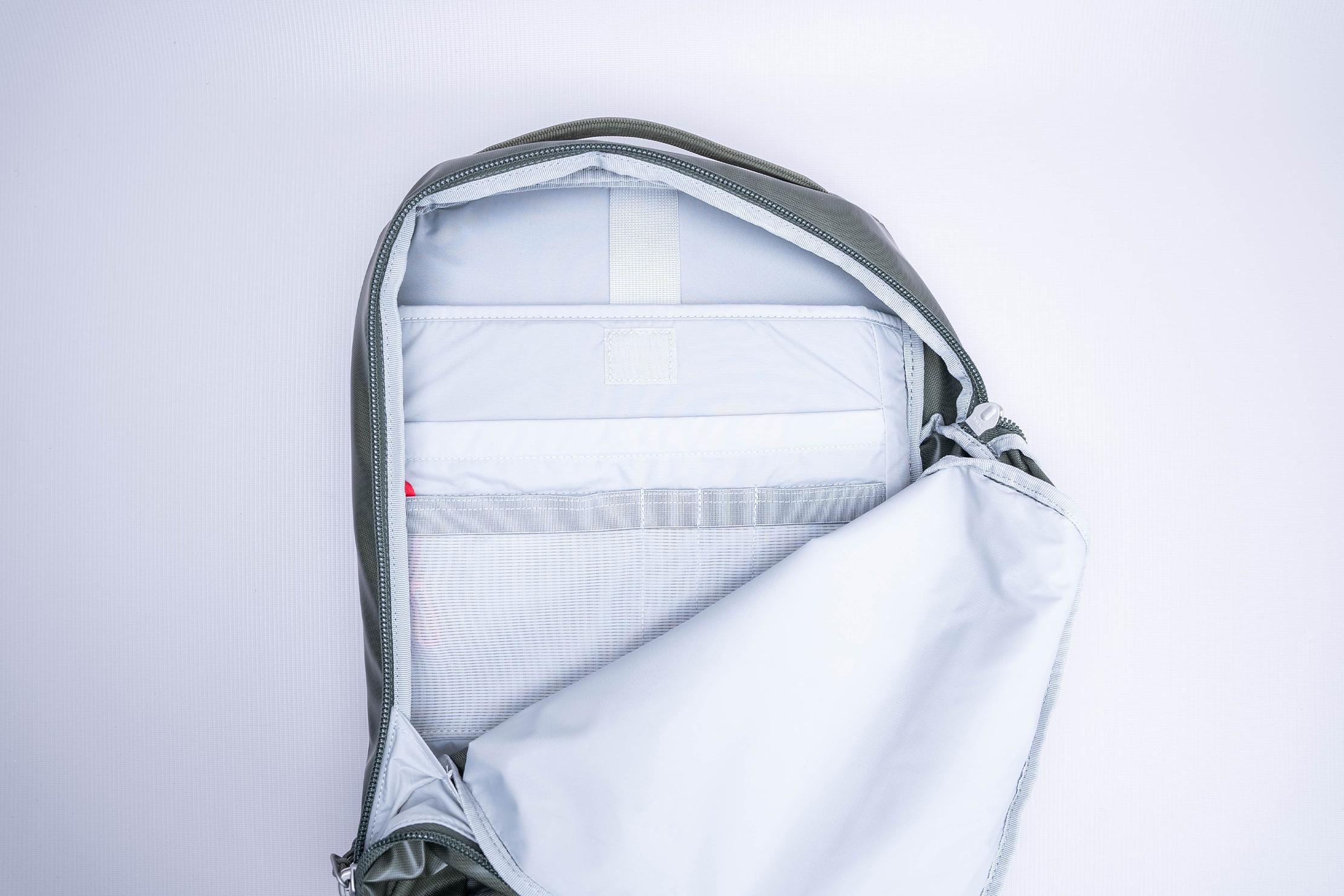
Like the front pocket, the main compartment’s interior lining is a lightly-colored fabric. That doesn’t seem important, but we’ve seen a lot of daypacks use black liners. While dark fabric hides stains effectively, it can make finding gear tricky, especially if most of your gear is also black. So with both the lightly colored liner and wide opening from earlier, navigating the Transporter Panel Loader’s interior should be fairly easy. However, there is a catch.
Check out the back, and you’ll see where most of the Transporter Panel Loader’s organization lives. There’s the laptop sleeve, document sleeve, mesh pockets, and pen slots. We’re really apprehensive when a backpack’s organization is focused and positioned in the main compartment like this for two reasons.

First, if you load those pockets up with bulky items, it can obscure gear underneath them. Fortunately, the Transporter Panel Loader’s interior is spacious enough that you can peek and see the gear lodged between the pockets and floor, though it can still get pretty crowded. Second, it’s very tricky to access those pockets once you pack the main compartment fully packed to the top.. We much prefer a dual-compartment layout, with a mostly empty main compartment and a separate admin panel. Good examples of this include the Aer City Pack Pro and even Osprey’s own Tropos daypack. However, the Transporter Panel Loader has its good points.
The mesh pockets feel particularly high quality and robust. They’re very stretchy, but not in a flimsy and loose way. Put something like a small pouch or charging adapter inside, and the reinforced rim’s elastic takes a good firm hold on it. From left to right, there’s a mesh pocket big enough for a charging adapter, two pen slots, and a slim one on the rightmost that’s the perfect size for a NITECORE NB10000 power bank. You can also use it for an Apple Magic Mouse, which shares similar dimensions. There’s also a red key leash built into the widest mesh pocket, which you can use to keep track of your house keys. The plastic clip feels out of place, given the rest of the bag’s good build quality, but it gets the job done.
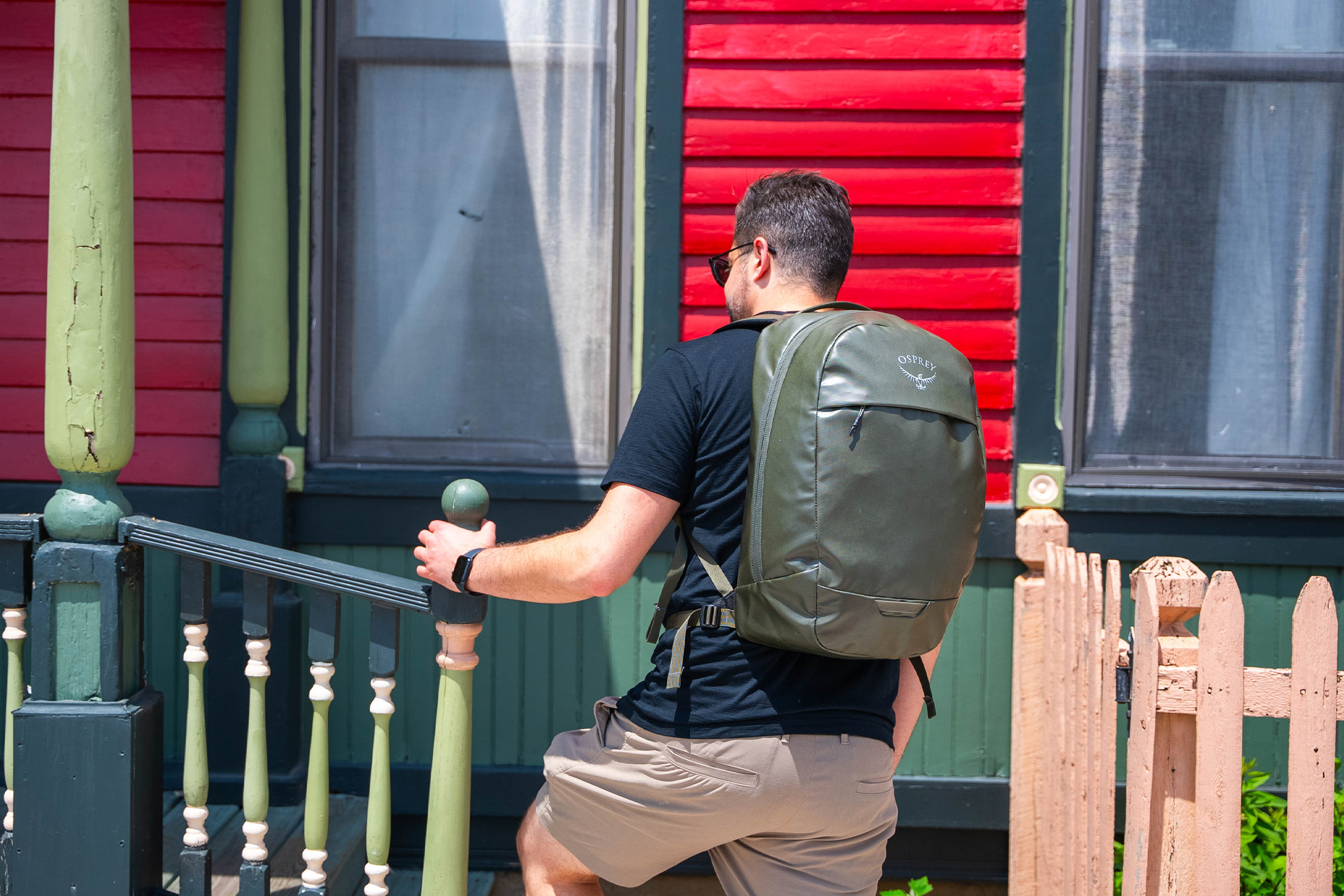
The laptop sleeve is padded and has a hook and loop strap to ensure your laptop doesn’t slide out. It’s big enough for a 16-inch MacBook Pro, so it’s reassuring that the sleeve has substantial padding for protection. The adjacent document sleeve also benefits from the laptop sleeve’s padding, so you can use it to store an iPad.
Usage Timeline
Condition: Excellent
- Dig the rubbery feeling on the outside of the bag
- Curious to see how the exterior mesh stretch pocket works in testing
- Stretchy mesh pockets with reinforcement at the top feels very durable – curious to see how testing goes
Condition: Excellent
- Love the rubbery material, but it’s already shown some blemishes after 3 weeks of testing, similar to a previous Osprey Transporter bag we reviewed
- Super comfortable fit
- The admin panel in the main compartment proved hard to access when the bag was full
- Overall, really solid bag for the price

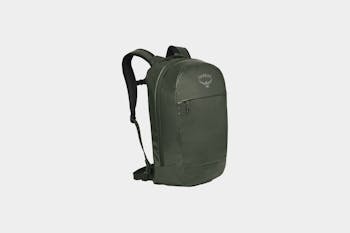






Get your questions about the Osprey Transporter Panel Loader answered from our team and the Pro Community right here on the page. Plus, join discussions with other members about gear, guides, and more.
Join Pack Hacker Pro or, Sign In